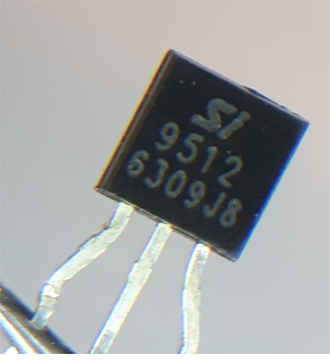
General description: Specifications: 1055 lm / 25 000h / 1 000 000 on-off / 11W / 220-240V 96 mA
Installation: Outdoords fixed ceiling armature with a motion sensor. Bulb failed after some hundreds hours of operation.
Buck converter operation: Line voltage is rectified and filtered by the diode bridge and 3.3uF capacitor. PNP switch transistor base current starts to flow through load LED's (11 in series/string) and 150k resistor charging up the 4.7 capacitor at transistor base, turning transistor on, current through the load and storing magnetic energy in 6.5 mH inductor. After 4.7u charges up so that emitter-base voltage falls below about 0,6V, transistor turns off and inductor's collapsing magnetic field causes current to continue through the load LED's mainly via transistor emitter-base circuit and partly through the diode across. Operation relies on the self-discharge of the base capacitor between the pulses, there is no external discharge path. The PCB has a place for a parallel component to 4.7 uF cap, but is unpopulated.Capacitor discharge rate determines the pulse period and the resulting load voltage.
It was found that the high voltage transistor was faulty as well as two leds one in both parallel strings.
In startup (turning on) the load LED's experience a gross over voltage/current (first pulses full DC 325V vs about 90V nominal) for a period of time before the transient is over. This is likely to lead premature failure of the LED's (one breaks-> whole string disabled).
Transistor specifications remain unclear as the markings in the component seem not to refer to any commonly available data. The operation suggests the collector-emitter voltage should be at least well over 250V. Voltage across transistor remains at continuous state at about 325V-90V =235V





